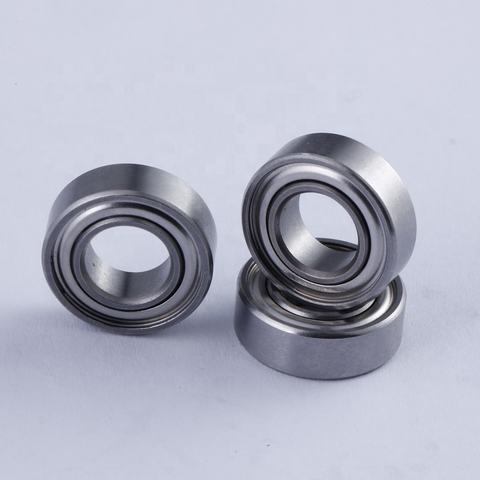High-Speed Micro Bearings in Medical Applications: Key Features and Benefits
High-speed micro bearings are essential components in modern medical equipment, enabling precise motion control in devices ranging from surgical robots to MRI scanners. These miniature bearings combine ultra-fast rotational capabilities with medical-grade materials to meet strict hygiene and reliability standards in healthcare environments.
Table of Contents
1. medical grade high speed micro bearings2. high precision micro bearings for medical devices
3. ultra-fast micro bearings in surgical tools
4. miniature bearings for medical equipment
5. high-speed ceramic bearings for medical applications
1. Medical Grade High Speed Micro Bearings

Medical-grade high-speed micro bearings require specialized stainless steel or ceramic materials that comply with FDA and ISO 13485 standards. These bearings undergo rigorous cleaning processes to eliminate particulate contamination, with typical diameters ranging from 1.5mm to 10mm. Advanced cage designs using PEEK or PTFE polymers ensure smooth operation at speeds exceeding 80,000 RPM while maintaining biocompatibility. Manufacturers implement vacuum lubrication techniques with NSF H1-registered greases to achieve maintenance-free operation throughout the bearing's lifespan, crucial for applications in sterile environments like operating rooms.
2. High Precision Micro Bearings for Medical Devices
Precision micro bearings in medical equipment demand ABEC-7 or higher tolerance ratings to ensure sub-micron level running accuracy. Dental handpieces exemplify these requirements, where bearings must maintain positional stability within 0.5μm while rotating at 400,000 RPM. Advanced manufacturing techniques like laser-etched raceways and computer-controlled grinding achieve surface finishes below 0.05μm Ra. These bearings incorporate hybrid ceramic balls (Si3N4) with stainless steel races to minimize thermal expansion variations during autoclave sterilization cycles, ensuring consistent performance across temperature fluctuations from -40°C to 300°C.
3. Ultra-Fast Micro Bearings in Surgical Tools
Modern surgical tools utilize ultra-fast micro bearings capable of 1.2 million RPM operations in arthroscopic shavers and orthopedic drills. These bearings feature diamond-like carbon (DLC) coatings to reduce friction coefficients below 0.001 while resisting biological fluid corrosion. Specialized preload adjustment systems maintain axial stability under varying load conditions during bone cutting procedures. Vibration levels are controlled below 0.05mm/s through dynamic balancing processes, ensuring surgeon precision during delicate operations. Manufacturers conduct accelerated life testing equivalent to 10,000 surgical procedures to guarantee reliability.
4. Miniature Bearings for Medical Equipment
Miniature bearings in portable medical devices require innovative designs to balance size constraints with performance demands. Insulin pump motors use 2mm bore bearings with custom seals that withstand 50,000 actuation cycles while maintaining torque consistency within 5%. MRI-compatible versions employ non-magnetic materials like zirconia ceramics and titanium alloys, achieving magnetic susceptibility below 0.01ppm. Advanced lubrication systems using perfluoropolyether (PFPE) oils prevent outgassing in vacuum environments found in laboratory equipment, ensuring reliable operation for over 20,000 hours continuous use.
5. High-Speed Ceramic Bearings for Medical Applications
Full-ceramic bearings (ZrO2/Si3N4) dominate radiation therapy equipment where electrical insulation and X-ray transparency are critical. These bearings achieve 60% weight reduction compared to steel equivalents while offering 3x higher fatigue life. Surface treatments like HIP (Hot Isostatic Pressing) processing increase fracture toughness to 8 MPa·m½, preventing micro-crack formation during high-G centrifuge operations. Specialized designs incorporate conductive coatings (e.g., TiN) to prevent electrostatic discharge in sensitive laboratory environments, maintaining surface resistance between 10⁶-10⁹ ohms for ESD protection.
From surgical robotics to diagnostic imaging systems, high-speed micro bearings form the backbone of modern medical technology. Understanding material compatibility, precision engineering requirements, and application-specific design considerations helps medical device manufacturers select optimal bearing solutions. The following sections explore critical aspects including sterilization compliance, load capacity calculations for prosthetic devices, noise reduction techniques in patient-facing equipment, and innovative sealing solutions for implantable devices.
In conclusion, high-speed micro bearings enable groundbreaking advancements in medical technology through precision engineering and material science innovations. As medical devices continue to miniaturize and increase operational speeds, bearing manufacturers must develop solutions that meet evolving sterilization requirements, biocompatibility standards, and extreme performance demands. Proper selection and maintenance of these critical components ensure reliable operation of life-saving medical equipment across diverse healthcare applications.




 13869596835
13869596835